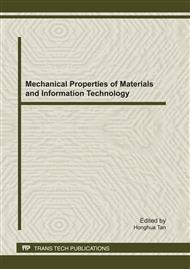p.40
p.46
p.52
p.56
p.64
p.70
p.76
p.81
p.88
Strain Distribution Characteristics in the Rolling Process of Shaped Wires
Abstract:
Based on the deformation features in the rolling process of shaped wires, this paper focuses on the metal flow rules and distribution characteristics of stress and strain through simulating the shaping process by DEFORM-3D. The equivalent stress and equivalent strain is in the same distribution: smallest on the base and gradually increasing along the broadening direction and highest on the tooth. A satisfactory concordance between the scattering of the hardness values measured over the wire sections and that of the equivalent strain is found, thus verifying the accuracy and the reasonableness of the simulation process.
Info:
Periodical:
Pages:
64-69
Citation:
Online since:
September 2011
Authors:
Keywords:
Price:
Сopyright:
© 2012 Trans Tech Publications Ltd. All Rights Reserved
Share:
Citation:


